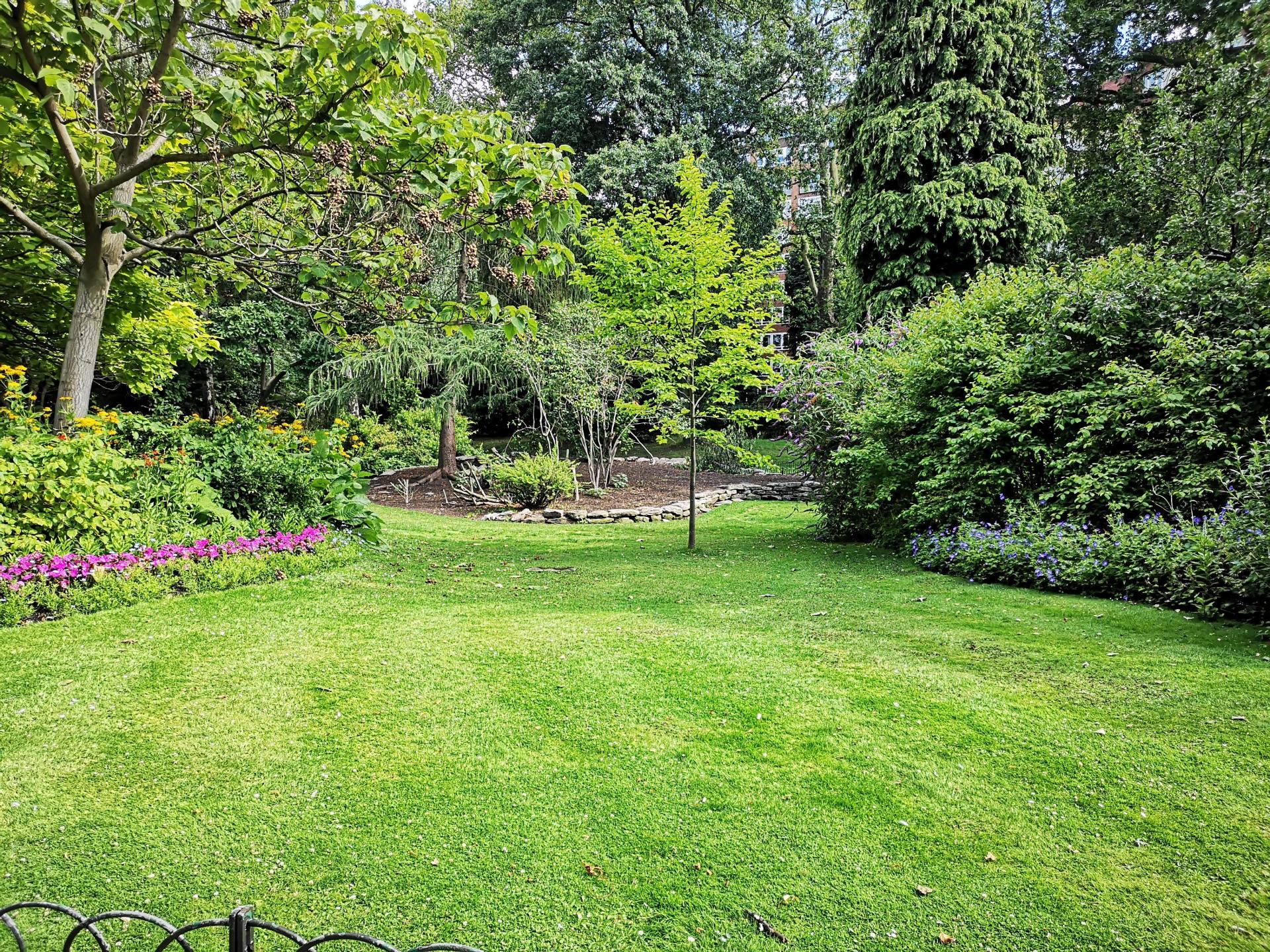You are here
Be A Better Gardener: A New Model of Lawn for Earth Day
Be A Better Gardener: A New Model of Lawn for Earth Day
By Thomas Christopher
I was invited to an Earth Day celebration last month to speak on the topic of lawns. The common response would have been to bash turf as an eco offender, and as we currently manage our lawns, that is true.
American lawns consume obscene amounts of toxic insecticides and herbicides, and unimaginable amounts of water: the Environmental Protection Agency estimates that landscape irrigation nationwide (principally to keep lawns green) uses 9 billion gallons of water a day. Then there’s the 90 million pounds of fertilizer, most of it synthesized from fossil fuel, Americans spread over their lawns every year, the air pollution spewed from lawnmowers, and the uselessness of contemporary turf as habitat for any kind of wildlife.
Long ago, I joined the movement to replace lawns with meadows, and I have planted a number of these over the years. Yet I’ve found that most homeowners are too attached to their lawns to follow that example. Among other things, they like the simplicity of the lawn’s maintenance (what other area of the garden can you entrust to low-skill, affordable labor?), and the play space it provides for children. As a result, in recent years, I’ve adopted a new goal: transforming lawns into a better model.
Consider this: the environmental defects of lawns mostly trace to the example we adopted. We imported a European style of turf, which, as a native plants nurseryman told me way back in the 1980’s, “is always on intensive care.” In fact, most of the turf grasses we adopted from northern Europe need a cool, moist climate to flourish, so throughout most of the United States, they struggle. Even in the Northeast, lawns do not thrive in the heat of our summers, going dormant when the temperature rises to around 80°F. Indeed, most of the water applied to lawns in summertime just evaporates off the surface, cooling the grass to keep it green and growing.
There’s another model of turf that we could be emulating. I first recognized it in a photograph taken at the turn of the 20 th century by Edwin S. Curtis of a Piegan Indian encampment on the Montana prairie. Around the teepees, a short neat turf stretches off in every direction, with only cattle or buffalo to crop it short, no irrigation, and no fertilization.
The message is that grasslands can be naturally tough. They flourish where the precipitation is too little and the temperature too high in summer and too low in winter for other types of vegetation to survive.
If we want to emulate this native American model, we need grasses that thrive without major inputs of resources, which are naturally short (so that they don’t need constant mowing), and which grow in bunches rather than in the dense carpet of so-called Kentucky bluegrass (which actually originated across the Atlantic). Clump forming grasses can coexist with low-growing wildflowers, which means that their turf will support pollinators and biodiversity.
The grasses I’ve found that best satisfy all these requirements are the fine fescues. Although not originally native to North America, they have naturalized throughout the Northeast and they grow happily in partnership with wildflowers such as our native violets, bluets, and pussytoes. The fine fescues tolerate drought well, grow in shade or sun, and if you mix white clover in with them and don’t remove the clippings, they need no fertilization. Of course, there won’t be many clippings because the fine fescues are naturally low-growing and require only a couple of mowings a year. If you purchase seed that has been inoculated with endophytes (a type of beneficial fungus that lives inside the grass), the resulting lawn will be naturally resistant to grazing insects and diseases. Fine fescues also have a natural ability to suppress the growth of weeds such as crabgrass in their vicinity.
There are two sources of fine fescues seed mixes that I particularly recommend. These are Prairie Nursery in Westfield, Wisconsin (www.prairienursery.com), which sells a “No-Mow Lawn” seed mix, and Wildflower Farm in Coldwater, Ontario, Canada (wildflowerfarm.com), which sells a similar product, “Eco-Lawn.” Both companies provide very complete instructions about how to convert your existing lawn, and how to maintain your fine fescue lawn once it is established. The wildflowers (and teepees) you have to provide yourself.
Be-a-Better-Gardener is a community service of Berkshire Botanical Garden. Its mission, to provide knowledge of gardening and the environment through a diverse range of classes and programs, informs and inspires thousands of students and visitors each year. Thomas Christopher is a volunteer at Berkshire Botanical Garden and is the author or co-author of more than a dozen books, including Nature into Art and The Gardens of Wave Hill (Timber Press, 2019). He is the 2021 Garden Club of America's National Medalist for Literature, a distinction reserved to recognize those who have left a profound and lasting impact on issues that are most important to the GCA. Christopher’s companion broadcast to this column, Growing Greener, streams on WESUFM.org, Pacifica Radio and NPR and is available at berkshirebotanical.org/growinggreener.
Help Our Garden Grow!
Your donation helps us to educate and inspire visitors of all ages on the art and science of gardening and the preservation of our environment.
All donations are 100 percent tax deductible.


